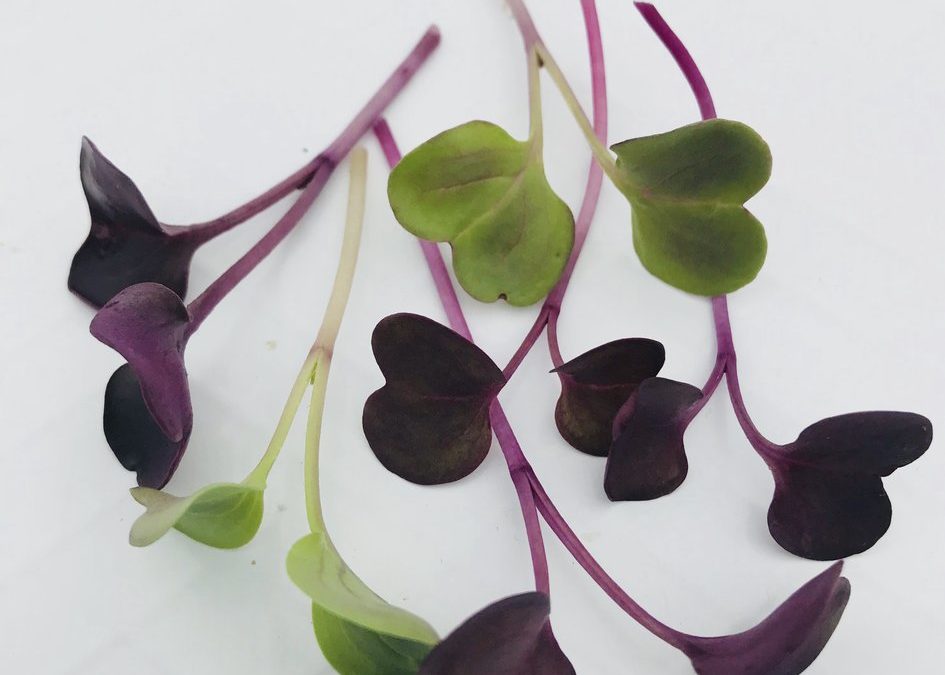The motivation for writing this article is rooted in my curiosity as to whether or not I’m able to regularly eat generous portions of the microgreen pea shoots that I grow each week without the risk of adverse consequences. My legitimate concern naturally grew into a larger question of needing to know which varieties of vegetables and herbs grown as microgreens have low, medium, or high levels of oxalates.
As of this date, there is sparsely any legitimate or reputable research on whether the oxalate content of microgreens is any differrent than the oxalate content of the same vegetables and herbs when grown to maturity.
However, my hope is that the following information may prove useful to you in drawing your own safe conclusions as to which microgreens are likely to have higher levels of oxalate.
Let the research begin.
Oxalate Levels Can Trigger or Worsen Kidney Stones
You could probably not care less about oxalates unless you are a veteran who has experienced the pain of having passed a kidney stone or two or three. While harmless for most people, high oxalate levels can trigger or worsen kidney stones Speaking as a veteran of the worst-case scenario of having a kidney stone that would not pass, and required surgery, I can wholeheartedly recommend that you give weighted consideration to the wisdom within the age-old saying, “An ounce of prevention is worth a pound of cure.” You see, while generous portions of healthy, locally grown, organic vegetables (and microgreens) belong in every well-balanced diet, there are specific vegetables that can contribute to the formation of calcium kidney stones if you eat too much too often… spinach and rhubarb being the primary culprits. If you think that kidney stones only afflict old people, think again. Children as young as 5 have developed kidney stones from well-intentioned parents who have successfully incorporated delicious, green smoothies into heir children’s daily diet, smoothies loaded with, you guessed it, oxlate-heavy greens like spinach. A low oxalate diet is usually defined as less than 50mg oxalate per day. For the sake of comparison, one cup of raw spinach contains around 655 mg of oxalate. As mentioned below, it’s safer to eat foods high in oxalate when combined with foods that are high in calcium like cheese and yogurt. Fans of green smoothies might consider rotating their ingredients to include low-oxalate options such as mustard greens, watercress, and lettuce to help prevent green smoothie-induced oxalate overload.
Oxalates are organic acids commonly found in most plants, but can also be synthesized by the body. Some people are sensitive to oxalates or more susceptical to the developing Calcium Oxalate kidney stones which are the most common type of kidney stone.
Kidney stones are often times a very painful condition in which pebble-like deposits form in the kidney and encounter difficulty passing through the narrow passasgeway of a person’s urinary tract which is only 3mm or 4mm wide. The average size of kidney stones is 4mm and will pass 80% of the time within 31 days, while a 5mm stone will only pass 20% of the time.
Some people are under the mistaken impression that foods that are rich in calcium must avoided to reduce the risk of developing calcium oxalate kidney stones, but this is actually incorrect. Calcium actually chemically binds with oxalate in the intestines which helps the body to eliminate it as waste. In with the good, out with the bad.
Take these Preventive Measures to Avoid Kidney Stones
- Lowering your salt intake by replacing processed foods with whole foods. Sodium levels in processed foods are too high!
- Drinking less coffee. Coffee is a diuretic which can contribute to dehydration if the coffee drinker is not also regularly drinking water throughout the day to compensate for the loss of fluids.
- Staying hydrated. Drinking at least 8 ounces of water 8 times throughout the day, everyday is a good habit. The latest research suggests 16 cups per day for men (1 gallon), 12 cups per day for women (3/4 gallon).
- Eating more high-calcium dairy foods such as milk, yogurt, and cheese and pairing high-calcium foods with foods that have higher levels of oxalate. Oxalate absorption in the intestine is dramatically increased with calcium (approx. 1000 mg/day) when consumed naturally in food or by taking calcium supplements during meals which include plants that contain oxalate. Calcium citrate is the preferred form of calcium supplement.
- Vitamin B6 supplements in 25-50mg may also reduce he amount of oxalate your body produces.
- Limiting Vitamin C supplments to no more than 500mg per day as oxalate is produced as an end product of Vitamin C (ascorbic acid) metabolism.
- Consuming fermented food products with beneficial bacteria from probiotics like Kombucha and sauerkraut may also assist in the degradation of oxalate
- Eating moderate servings of animal protein. Having diet high in animal protein (milk products, eggs, beef, chicken, turkey and pork) is a well-known risk factor for calcium oxalate stone disease as it leads to increased urinary loss of calcium, which results in less calcium being available to attach itself to oxalate.
- Eating less sugar. Nothing more needs to be said here.
Eating Moderate Amounts of Microgreens is Less Likely to Cause Kidney Stones
It has been reported that eating moderate amounts of microgreens is less likely to cause the formation of kidney stones due to the higher citrate levels in microgreens which counterbalance the formation of calcium oxalate. Potassium citrate, which is a salt of citric acid found in lemons and limes, can increase urinary citrate making blood and urine more alkaline or less acidic, decreasing the body’s synthesis of oxalate, thus adding protection against kidney stones. Studies suggest that citric acid itself does not appear to aid in kidney stone prevention.
I’m going to include any data found that pertains to various types of sprouts even though microgreens are not sprouts. Sprouts are grown in water and consumed whole, whereas microgreens are grown to the next growth stage of developing true leaves are are harvested above the root level. Data suggests that some sprouts can be relatively close in nutritional value to microgreens, but are lacking in beneficial phytonutrients and chlorophyll.
Relative Levels of Oxalate found in Vegetables Grown as Microgreens
Note: To sort the microgreens list by oxalate level, simply click on the column headers for low, medium, or high.
| Microgreen or Sprout Variety | Low | Medium | High |
|---|---|---|---|
| Alfalfa Sprouts | X | ||
| Amaranth | X | ||
| Arugula | X | ||
| Basil | X | ||
| Beet | X | ||
| Broccoli | X | ||
| Brussels Sprouts | X | ||
| Cabbage, White | X | ||
| Carrots | X | ||
| Cauliflower | X | ||
| Celeriac | X | ||
| Celery | X | ||
| Chicory | X | ||
| Chives | X | ||
| Corn | X | ||
| Dandelion Greens | X | ||
| Endive | X | ||
| Fennel | X | ||
| Kale | X | ||
| Kohlrabi | X | ||
| Leeks | X | ||
| Lettuce | X | ||
| Mustard Greens | X | ||
| Onions | X | ||
| Orach | X | ||
| Oregano | X | ||
| Parsley | X | ||
| Peas | X | ||
| Peppermint | X | ||
| Radishes | |||
| Sage | X | ||
| Sorrel | X | ||
| Swiss Chard | X | ||
| Watercress | X | ||
| Wheatgrass | X |
A more comprehensive list of specific foods in various food groups and their relative levels of oxalates has been published by Kaiser Permanente and can be found in their fact sheet titled, ‘Dietary Changes to Prevent Calcium Oxalate Stones‘.
More in-depth information on oxalates, diet, and kidney stone prevention can be found via the following resources:
- Online Oxalate Counter Calculator
- A List of Low-Oxalate Foods
- Cleveland Clinic: Kidney Stone Oxalate Diet
- Academy of Nutrition and Dietetics. Nutrition Care Manual
- US Department of Agriculture. ChooseMyPlate.gov
- Kidney.org : 6 Easy Ways to Prevent Kidney Stones
- University of Chicago: How To Eat A Low Oxalate Diet
- National Institutes of Health: Increased protein intake on controlled oxalate diets does not increase urinary oxalate excretion

